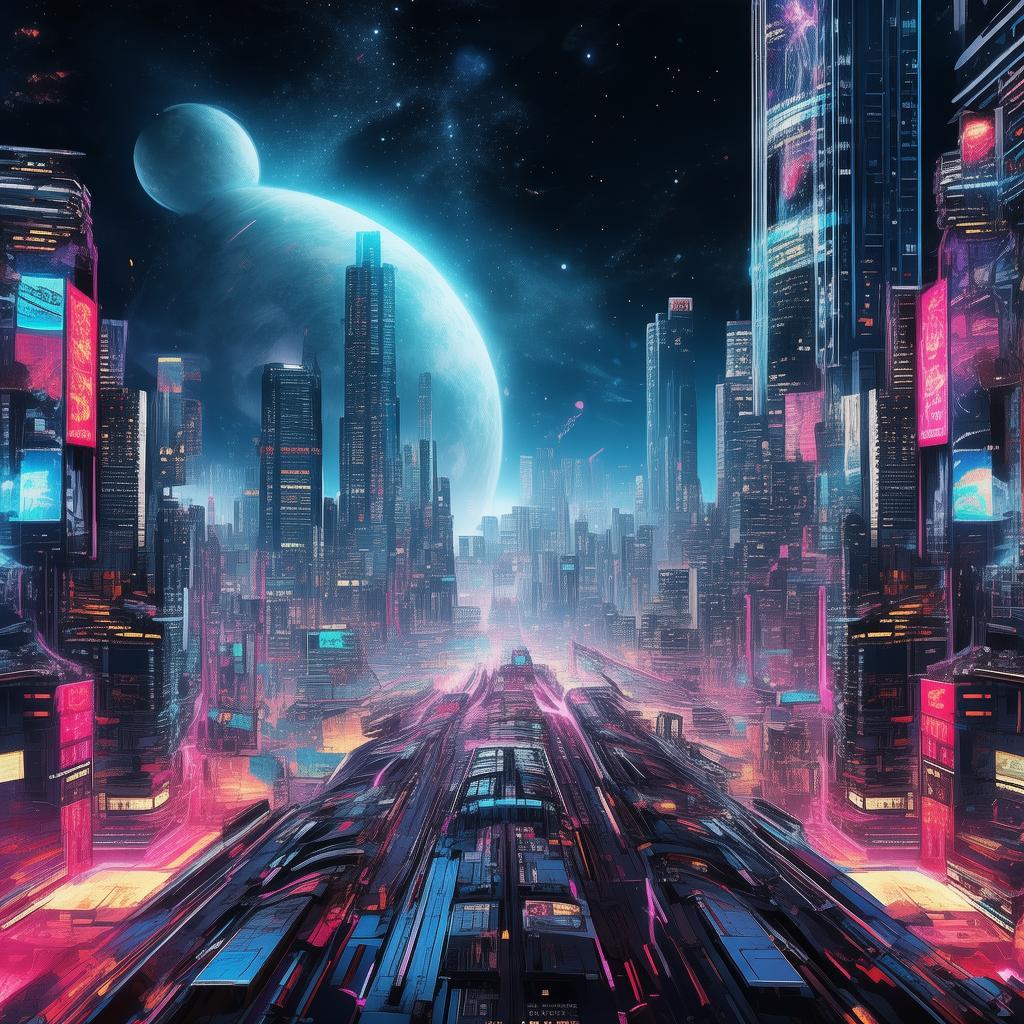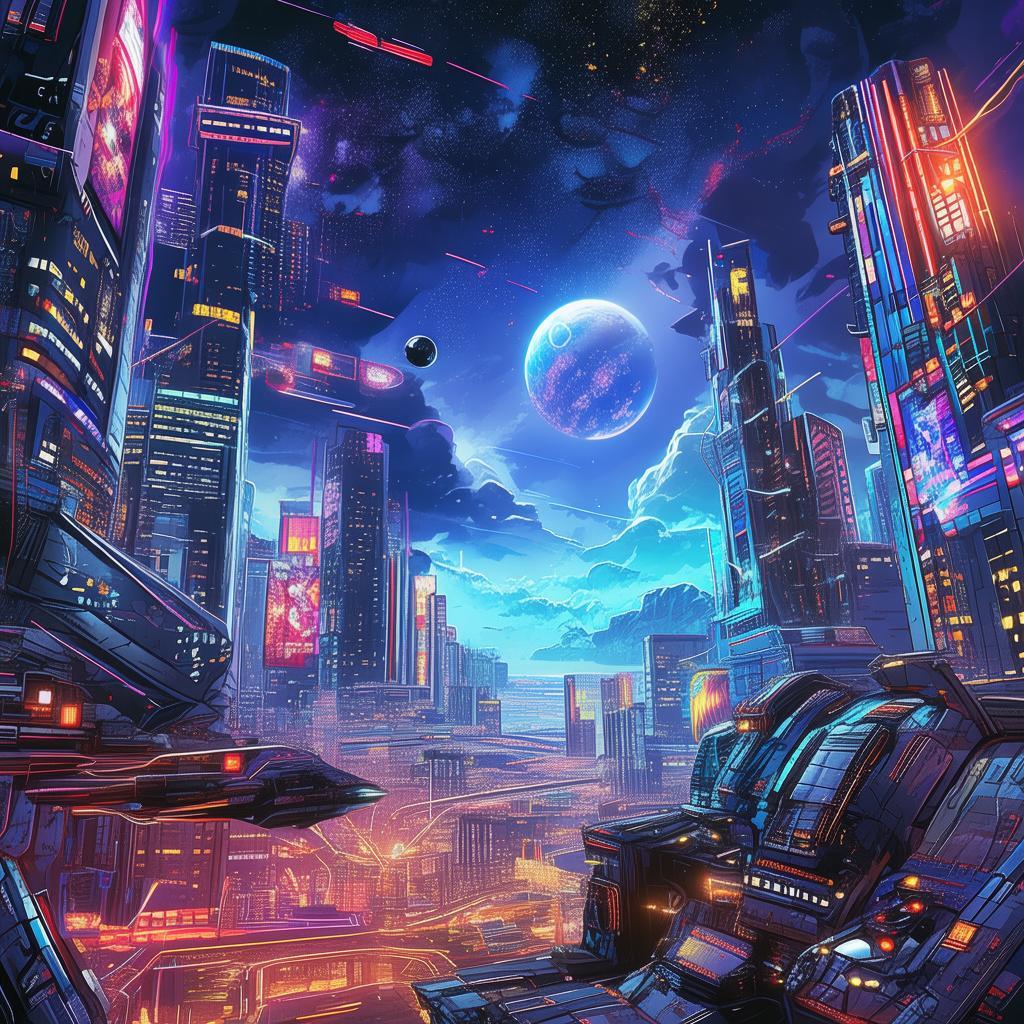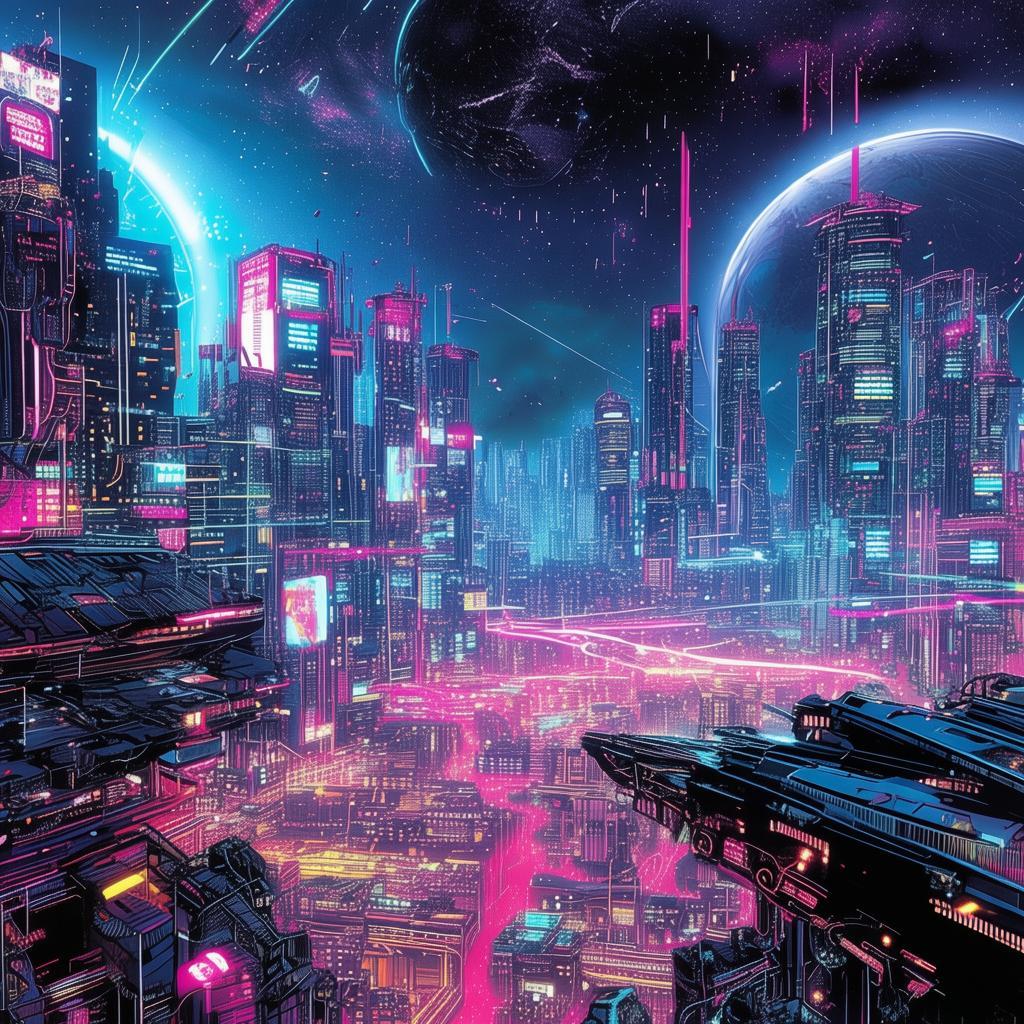The Infinity Paradox
In the year 2147, Dr. Eliot Voss, a reclusive theoretical physicist, had spent decades researching the mysteries of the universe. His theories on quantum entanglement and time travel had garnered international acclaim, but they were shrouded in controversy and skepticism. One evening, while pondering over the complex equations that defined his life's work, he stumbled upon a pattern that seemed to suggest a way to manipulate time itself.
Dr. Voss' breakthrough was the discovery of a new kind of quantum entanglement, one that could potentially allow for the manipulation of time on a macro scale. He named his discovery "Temporal Entanglement," and it promised to revolutionize the way humanity understood and interacted with time.
With the help of his dedicated team, Dr. Voss began constructing a device capable of harnessing this new form of entanglement. The project was code-named "Project Infinity." As the device neared completion, Dr. Voss decided to take a personal risk and test it on a small scale.
He set the device to create a temporal loop, a moment in time that would repeat indefinitely. To his astonishment, the loop worked perfectly. He found himself standing in the same room, in the same moment, over and over again. He had become an observer in his own temporal loop.
Eliot's team grew concerned, but Dr. Voss was captivated by the possibilities. He began to study the loop, looking for patterns and anomalies. It wasn't long before he realized that the loop was not an isolated event. The temporal entanglement had created a ripple effect, creating an infinite number of loops throughout the universe.

One day, while examining the data, Eliot noticed a peculiar pattern. The loops were not all identical; some were more stable than others. He hypothesized that if he could find a way to stabilize the unstable loops, he could prevent the universe from fracturing into a chaotic, infinite number of realities.
Determined to save the universe, Eliot set out to stabilize the loops. He discovered that the key to stability lay in the balance of the loops' quantum states. By manipulating these states, he could stabilize the loops and prevent the universe from unraveling.
However, as he delved deeper into the project, Eliot began to question the very nature of reality. The more he learned about the loops, the more he realized that they were not just moments in time, but different realities coexisting simultaneously. The stability of one loop could affect the others, and the actions taken in one loop could have unforeseen consequences in another.
As he grappled with these implications, Eliot found himself in a moral dilemma. Should he continue to stabilize the loops, potentially altering the course of history in countless ways, or should he abandon the project and let the universe fragment?
The decision became even more pressing when he discovered that his actions were not the only ones affecting the stability of the loops. Other researchers, with similar goals, had also begun to experiment with temporal entanglement. Their efforts were creating a chaotic web of temporal loops, threatening to tear the fabric of reality asunder.
Eliot knew that he had to act quickly. He gathered his team and presented them with a plan. They would travel to the origins of the temporal entanglement, to the moment when the first loop was created. There, they would stabilize the loops and prevent the cascading effects from occurring.
The team embarked on a perilous journey through time and space. They faced countless challenges, from navigating through unstable loops to dealing with the consequences of their actions in other realities. Each decision they made could alter the course of history, and they had to be careful not to create paradoxes that could destroy the fabric of reality.
As they approached the moment of creation, Eliot realized that the true power of temporal entanglement lay not in the manipulation of time, but in the understanding of the interconnectedness of all realities. He understood that the key to stability was not in stabilizing individual loops, but in finding a balance between them.
With this newfound understanding, Eliot and his team stabilized the loops at the moment of creation. The universe was saved, but at a cost. Eliot had become a guardian of time, responsible for maintaining the balance between realities.
As he stood in the stabilized loop, Eliot realized that his journey had not been just about saving the universe. It had been about understanding the true nature of reality and the responsibilities that came with that understanding. The Infinity Paradox had revealed the delicate balance of existence, and Eliot was now committed to preserving it.
The universe was safe, but the journey had only just begun. Eliot and his team would continue to monitor the loops, ensuring that the balance was maintained. And in the quiet moments between the loops, Eliot would ponder the mysteries of time and reality, ever vigilant against the next challenge that could threaten the fabric of the universe.
✨ Original Statement ✨
All articles published on this website (including but not limited to text, images, videos, and other content) are original or authorized for reposting and are protected by relevant laws. Without the explicit written permission of this website, no individual or organization may copy, modify, repost, or use the content for commercial purposes.
If you need to quote or cooperate, please contact this site for authorization. We reserve the right to pursue legal responsibility for any unauthorized use.
Hereby declared.









